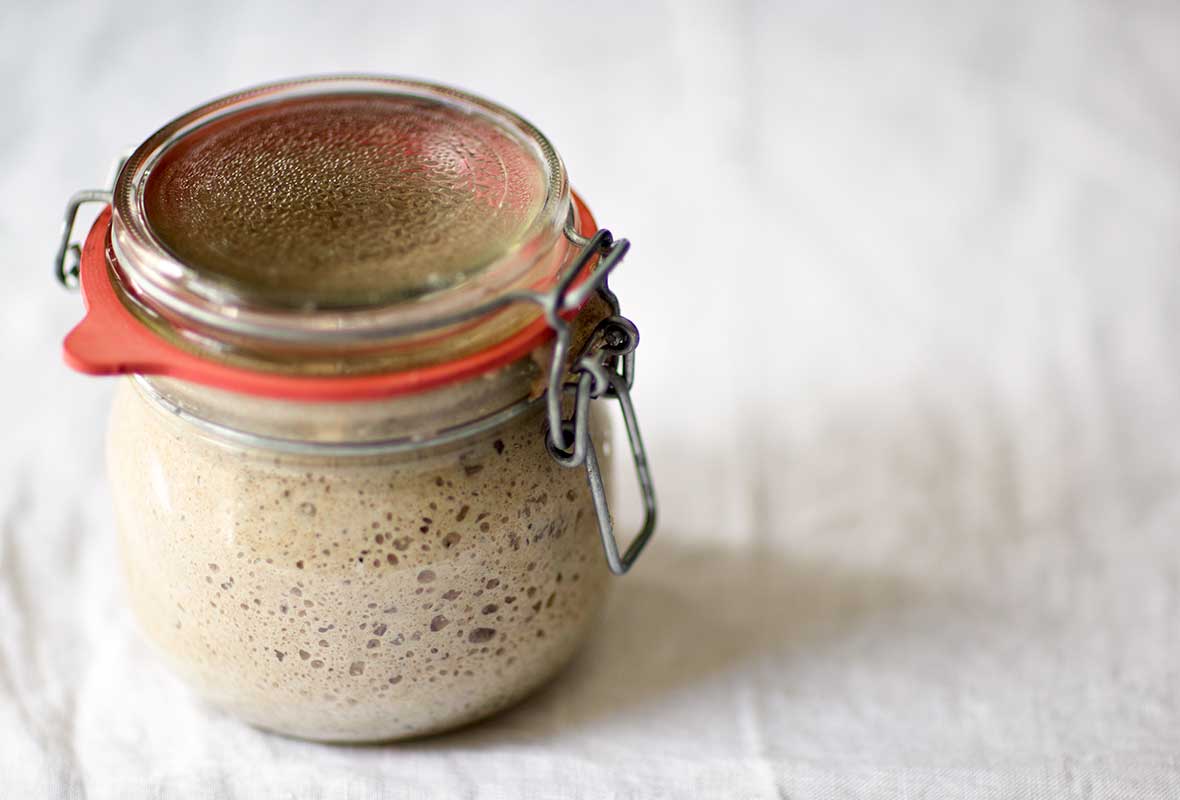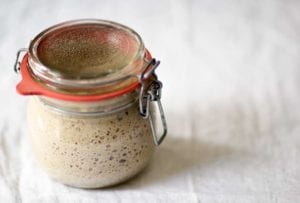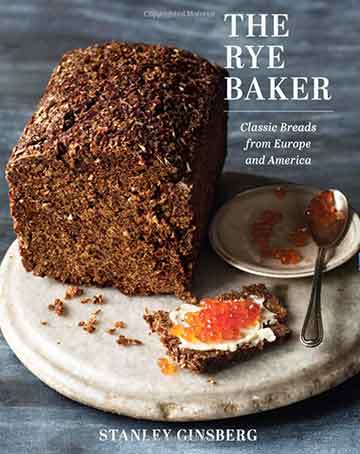
It’s not hard to make a rye sourdough starter from scratch. Some sourdough starters rely on wild yeasts that live in the air, others on acid-producing bacteria present in buttermilk, yogurt, pineapple juice, and the like, and still others start with commercial yeast or store-bought starters. Fact is, none of these additives is necessary. All it really takes to build a delicious and robust rye sour culture, or starter, is some whole-grain rye flour, water, a warm place, and patience. [Editor’s Note: And when your traditional rye sourdough starter is complete, the very first thing you’re going to want to do is use it to make this Galician rye bread.]–Stanley Ginsberg
☞ LEARN MORE, READ: HOW TO DRY SOURDOUGH STARTER

Rye Sourdough Starter
Ingredients
Day 1: Make the Rye Sourdough Starter
- 2.5 ounces whole grain rye flour, preferably organic
- 2.5 ounces warm water (105°F or 41°C)
Days 2 to 7: Refresh the Rye Sourdough Starter
- 2.5 ounces whole grain rye flour, preferably organic
- 2.5 ounces warm water (105°F or 41°C)
- 2.5 ounces Sour Starter from the preceding day
Days 8 and Beyond: Maintain the Rye Sourdough Starter
- 2.5 ounces medium or whole-grain rye flour, preferably organic
- 2.5 ounces warm water (105°F or 41°C)
- .25 ounces rye sourdough starter
Instructions
Day 1: Make the rye sourdough starter
- Start with equal amounts of organic rye flour and water by weight. Dump them in a nonreactive (glass, porcelain, stainless-steel, plastic) container, mix by hand into a stiff paste, cover, and let stand at room temperature (68 to 72°F or 20 to 22°C) for 24 hours.
☞ TESTER TIP: Occasionally the yeast normally present in whole grains fail to establish itself in a new culture; if, after 3 or 4 days, the culture darkens, develops a mold, or smells bad, dump the whole batch and start over. After a week, the culture, or sourdough starter, will be ready to use or to be stored refrigerated in an airtight container for a couple days. [Editor's Note: If storing the sourdough starter for more than a couple days, you'll need to maintain it, which we explain how to do just below.]
Days 2 to 7: Refresh the rye sourdough starter
- The next day, discard all but 2 1/2 ounces (70 grams) of the culture and mix the remainder with the refresh ingredients, cover, and let stand. Repeat each day, discarding all but 2 1/2 ounces (70 grams) of the preceding day’s culture.
☞ TESTER TIP: The most important point to remember at the early stages is to feed the sourdough starter daily. Even when it shows no apparent fermentation, the yeast is busy multiplying and consuming nutrients at a very high rate. By the second or third day, it will swell, show bubbles, and give off a clean sour smell. Over the next few days the activity will become more and more vigorous and the smell more intense.
Days 8 and Beyond: Maintain the rye sourdough starter
- In a perfect world—or in a working bakery—sourdough starters are refreshed daily. That said, daily feedings demand both a degree of dedication and abundant flour supplies that are impractical for all but the most committed home bakers. You can get by refreshing your starter every 36 hours or so.
- Mix the rye flour, water, and rye sourdough starter by hand until incorporated. Cover and ferment at room temperature (68 to 72°F or 20 to 22°C) overnight or for 10 to 12 hours. The sponge will be very bubbly, have a clean sour smell, and will have tripled in volume. Store refrigerated in an airtight container and it will last indefinitely.

Nutrition
Nutrition information is automatically calculated, so should only be used as an approximation.
Recipe Testers’ Reviews
The rye starter was easy to make and quick. It took about 5 minutes each of the 7 days. Mine smelled great and seemed consistent after the week of feedings. I switched to the refresh amounts after that and it stayed nice and healthy.
During the buildup, you end up tossing about 2/3 of it away. I definitely recommend a scale versus just using volume measurements.










My sweet Ukranian neighbor gave me a rye sourdough starter today that she just fed. She told me to keep it in the fridge but not airtight, with holes poked in the top of a plastic lid. Because of the language barrier I didn’t understand what to do with it when and I would love to take good care of this. Any advice? Thanks in advance!
That really is a sweet neighbor, Denise! If you’re storing it in the fridge, as your neighbor described, you can get by feeding it once a week or so. You’ll want to take it out of the fridge, and discard all but 70 grams of the starter in the jar. Then refresh it using the “Day 8 and beyond” instructions in the recipe. If you’re using it to make bread, let it become very active and bubbly before using, and then feed the starter again before refrigerating it. If you’re just feeding it, give it several hours at room temperature to start activating, and then return it to the fridge.
I ran out of rye flour and forgot to replenish; can i use whole wheat to feed starter?
Yes, Denise, you can.
Thank you, Angie!
I’m reviving a refrigerated starter and it has been a few days of feeding; however, I had to put it in the refrigerator for the nite without a feeding yesterday. I will continue feeding today. My question is, do I need to use the starter at peak jar rising? I seem to keep missing it! Also, have you all tried the Galician without yeast? And if so was it a very flat loaf? And what is the best bread flour to use for Galician? Many thanks for many questions!
You’re welcome, denise! You don’t need to wait for your starter to peak before using it. If it’s active, give it a feeding and once it becomes very active, go ahead and use it. We haven’t tried it without the yeast, though I suspect you’d get a much flatter loaf if you did. As for bread flour, use whatever you like best! There are so many great choices on the market now.
Hi – When storing in the refrigerator, do I need to feed it once a week or so? How long before the actual baking do I need it out for my next bake?
Azmeen, if you’re just maintaining your starter, then yes, just pull it out once a week, let it warm up to room temperature, feed it, give it a couple hours to get active, and stash it in the fridge again. If you’re going to be baking with it, we’d recommend that you pull it out of the fridge a couple of days before using, and give it a couple feeds to get it nice and active again before baking with it.
Thanks, Angie! And once I have my mature starter ready, I can use the starter in any recipe – not just rye bread ones. Right?
Got my supplies and gonna start tonight! Too excited 😀
Yes, absolutely, Azmeen. Do let us know how it turns out!